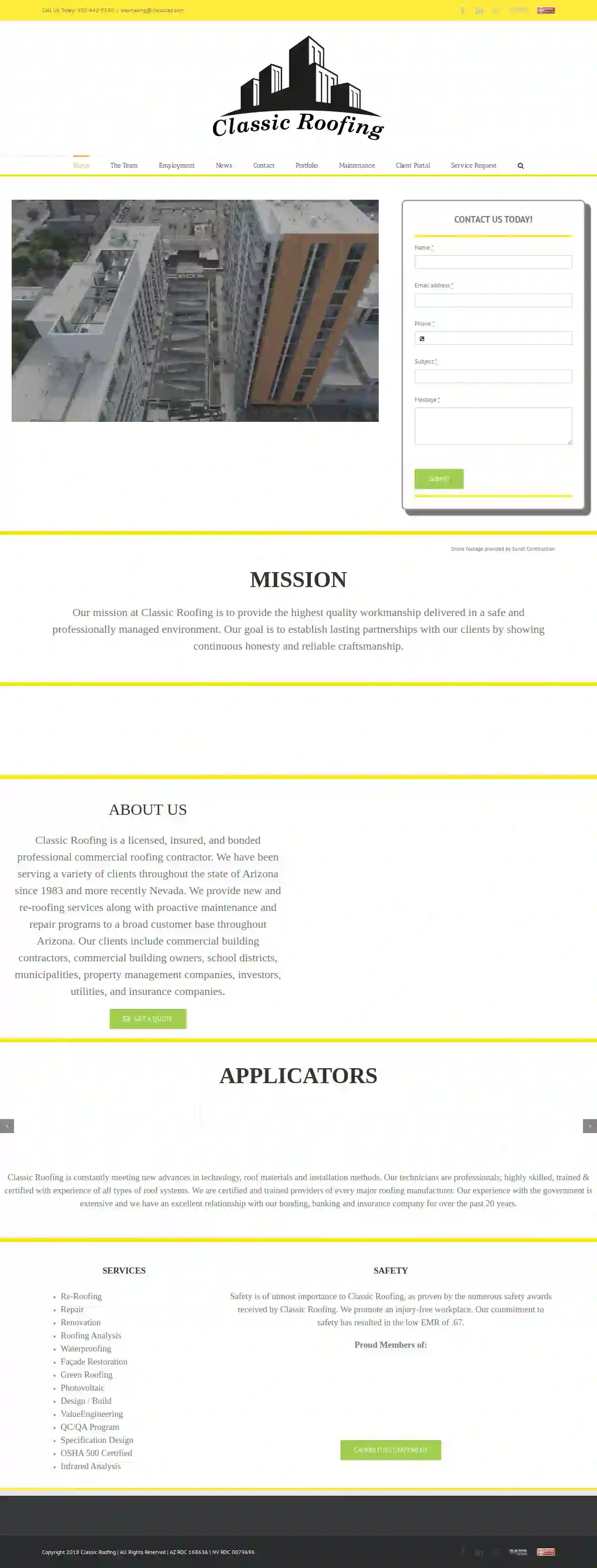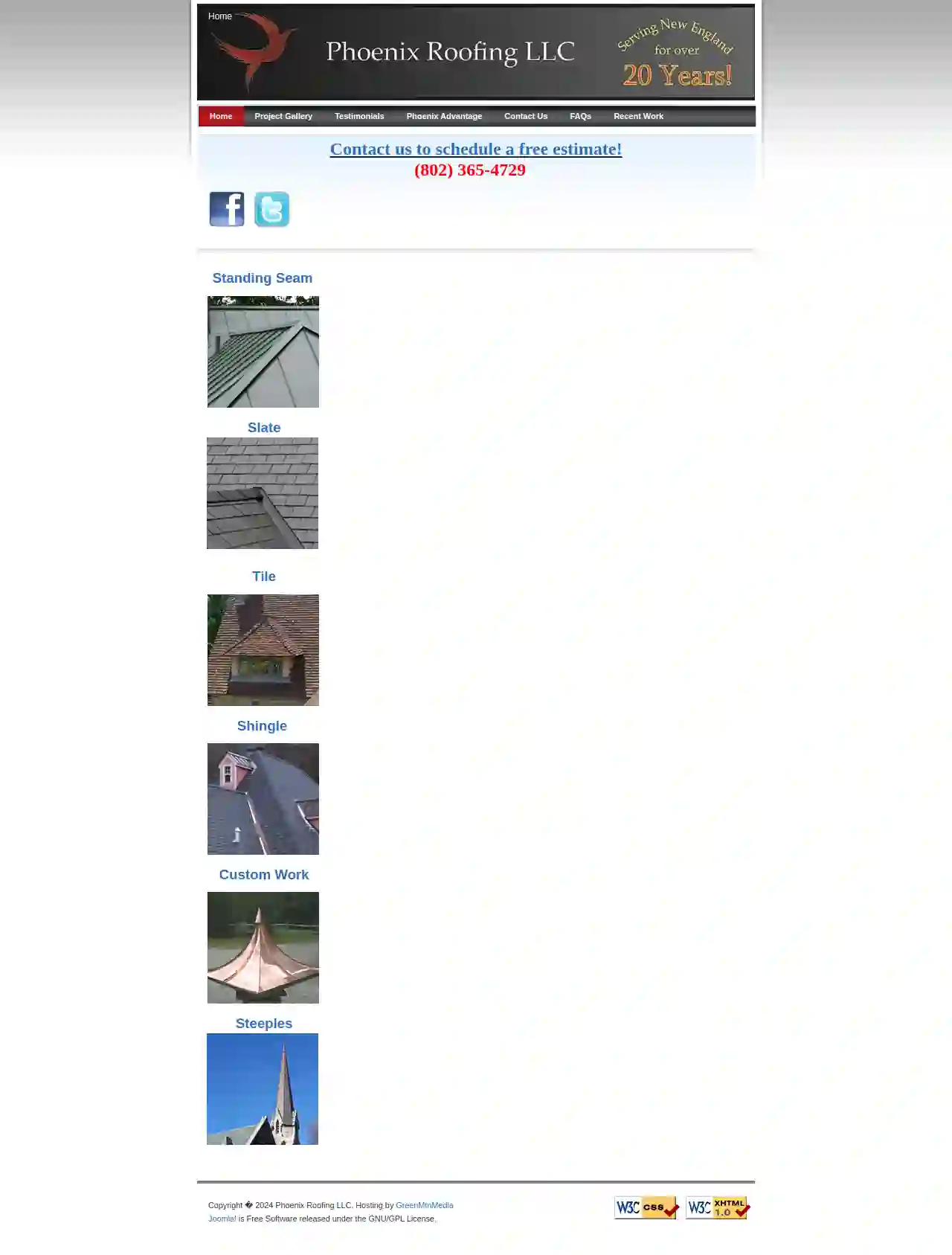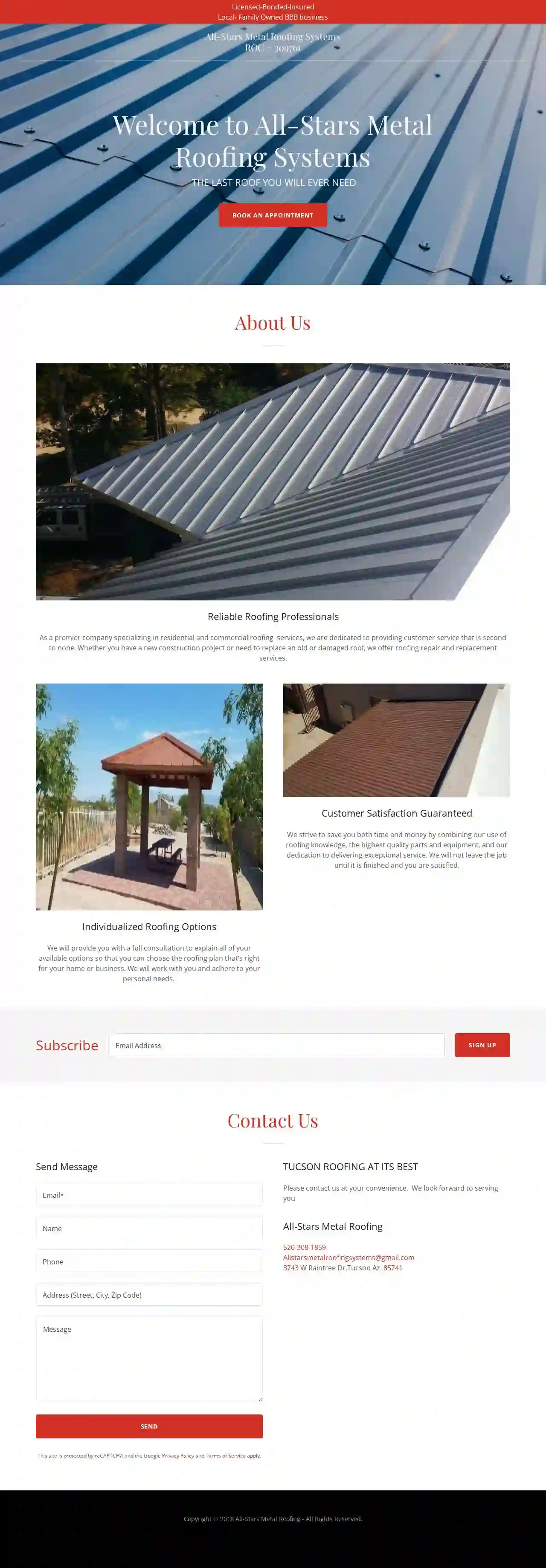Roofing Companies Thatcher
Top 10 Roofers in Thatcher
Receive multiple Roofing Services quotes for your project today! Compare profiles, reviews, accreditations, portfolio, etc... and choose the best deal.

Classic Roofing LLC
4.616 reviews1000 E. Washington St., Suite 100, Phoenix, 85004, USClassic Roofing is a licensed, insured, and bonded professional commercial roofing contractor serving clients throughout Arizona since 1983 and recently expanding to Nevada. We provide new and re-roofing services, along with proactive maintenance and repair programs to a broad customer base. Our clients include commercial building contractors, commercial building owners, school districts, municipalities, property management companies, investors, utilities, and insurance companies. Our mission is to provide the highest quality workmanship delivered in a safe and professionally managed environment. We aim to establish lasting partnerships with our clients by demonstrating continuous honesty and reliable craftsmanship. Classic Roofing stays ahead of the curve by constantly meeting new advances in technology, roof materials, and installation methods. Our technicians are highly skilled, trained, and certified with experience in all types of roof systems. We are certified and trained providers of every major roofing manufacturer. Our extensive experience with the government has resulted in an excellent relationship with our bonding, banking, and insurance companies for over 20 years. Safety is paramount at Classic Roofing, as evidenced by the numerous safety awards we have received. We promote an injury-free workplace and our commitment to safety has resulted in a low EMR of .67.
- Services
- Why Us?
- Accreditations
- Gallery
Get Quote
Universal Roofing Specialists LLC
555 reviews35477 W Santa Barbara Ave., Maricopa, 85138, USUniversal Roofing Specialist LLC is a family-owned and operated business that has been providing high-quality roofing services to the good folks in and around Maricopa, AZ for over a decade. Our team of experts has extensive experience in residential and commercial roofing, and we're fully insured to ensure your peace of mind. We're committed to delivering excellent service and value to our customers, and we're proud to be your trusted partner for all your roof installation, repairs, and maintenance needs.
- Services
- Why Us?
- Testimonials
- Gallery
Get Quote
Master Tech Roofing
538 reviewsTucson, USMaster Tech Roofing, LLC is a trusted, third-generation roofing company serving Tucson, AZ, and the surrounding areas for over 12 years. We are a ROC licensed company (Number 331394) dedicated to providing high-quality roofing services for both residential and commercial clients. Our team of experienced professionals offers a comprehensive range of services, including roof replacement, repairs, installations, and coatings. We pride ourselves on our commitment to exceeding customer expectations with our workmanship, competitive rates, and guaranteed results. Whether you need a new roof, repairs for existing damage, or a roof coating to extend the life of your roof, Master Tech Roofing, LLC is your reliable partner for all your roofing needs.
- Services
- Why Us?
- Accreditations
- Gallery
Get Quote
SKI Roofing
516 reviewsTucson, USSKI ROOFING LLC is a reliable roofing contractor serving the Tucson, Arizona area. We specialize in providing high-quality roofing services, including roof inspections, maintenance, repairs, replacements, and wind & hail damage restoration. With years of experience and a commitment to customer satisfaction, we strive to deliver exceptional results for every project. Our team of skilled professionals utilizes top-quality materials and proven techniques to ensure durable and long-lasting roofing solutions. We are fully licensed and insured, providing peace of mind to our clients. At SKI ROOFING, we understand the importance of a strong and reliable roof. That's why we offer a comprehensive range of services to meet all your roofing needs. Whether you require a minor repair or a complete roof replacement, our team has the expertise and experience to handle it efficiently and effectively. We are dedicated to providing transparent and competitive pricing, ensuring that our clients receive the best value for their investment. We take pride in our exceptional customer service and strive to build lasting relationships with our clients. We are committed to clear communication, timely project completion, and exceeding expectations. Choose SKI ROOFING for all your roofing needs and experience the difference of working with a trusted and reliable contractor.
- Services
- Why Us?
- Testimonials
- Gallery
Get Quote
Best Choice Roofing
4.691 reviews2320 W Mission Ln #2, Phoenix, 85021, USBest Choice Roofing is a local roofing company with offices in over 65 cities. We are a nation's largest platinum roofer, offering premium roofing services, including residential and commercial roofing, roof replacement, roof repair, and weather damage restoration. Our reputation is built on providing lifetime warranties, flexible financing options, and a commitment to customer satisfaction. Contact us today to schedule a free consultation and learn more about our services.
- Services
- Why Us?
- Accreditations
- Gallery
Get Quote
Alpha Roofing LLC
4.117 reviewsTucson, USAlpha Roofing LLC is a reputable roofing company serving Tucson, AZ and nearby regions, providing top-quality roof installation, repairs, and maintenance services. We are a trusted roofing company serving the Tucson, AZ community and its surrounding areas. With our team of experienced professionals, we pride ourselves on providing reliable and efficient roofing solutions. Whether it's roof repairs, installations or maintenance, we guarantee quality workmanship and exceptional customer service.
- Services
- Why Us?
- Our Team
- Testimonials
- Gallery
Get Quote
Phoenix Roofing LLC
51 reviewsN/A, 802, USPhoenix Roofing LLC is a reputable roofing company serving the Vermont area. With years of experience, we specialize in shingle, tile, slate, and standing seam roofing. Our team of experts is dedicated to providing top-notch services, ensuring your roof is installed correctly and efficiently. Contact us today to schedule a free estimate!
- Services
- Why Us?
- Gallery
Get Quote
M&T Roofing and Restoration
514 reviews114 Lindsay Court, Elyria, OH, 44035, USM&T Roofing and Restoration is a locally owned and operated roofing company proudly serving Northeast Ohio. Our team is dedicated to being the most trusted and sought-after roofing company in the region. We offer a range of services, including complete roof replacements, storm damage restoration, roof repairs, and commercial roofing. Our team is committed to providing exceptional customer service and ensuring that our customers are completely satisfied with our work. We are a GAF Certified Roofing Contractor, which means we meet strict standards for licensing, insurance, and business practices. We offer a wide range of warranties to fit your budget and circumstances. Our team is dedicated to providing top-notch communication and workmanship, and we are proud of our reputation for being kind, professional, detailed, and thorough. We would be happy to schedule a free inspection and provide a quote for your roofing needs.
- Services
- Why Us?
- Accreditations
- Our Team
- Testimonials
- Gallery
Get Quote
Roof Tec Exterior Solutions LLC
513 reviews85295, USWHERE ROOFS AND QUALITY MEET. REQUEST A QUOTE FOR A ROOF REPAIR OR ROOF ESTIMATE TODAY! Call Us: 480-600-0092 CONTACT US Contact Us! Fill out my online form. Roof Replacement Roof Repairs Exterior Painting #1 ROOFING COMPANY IN GILBERT! When searching for the best roofing company in Gilbert, it's crucial to consider several key factors. Start by looking for a company with a solid reputation and years of experience, such as Roof Tec Exterior Solutions LLC. Reading online reviews and checking references can provide valuable insights into their past performance. Ensure the company is licensed, insured, and follows safety regulations to protect both their workers and your property. Ask for detailed written estimates and compare them, making sure all aspects of the project are included. Choose the company locals use - Roof Tec Exterior Solutions LLC. Call today to learn more about this family-owned and operated roofing company in Gilbert, and request your free estimate. Learn More About Us AREAS WE SERVICE Roof Tec Exterior Solutions LLC stands out as the premier choice for roofing services in and around Gilbert. With a proven track record of excellence and years of experience, they have garnered a reputation for delivering top-notch roofing solutions. Their commitment to quality, coupled with their expertise, ensures a reliable and satisfactory experience for all your roofing needs. Gilbert Chandler Sun Lakes San Tan Valley Mesa Scottsdale Paradise Valley Sun City Phoenix Ahwatukee Fountain Hills Tempe Queen Creek OUR COMPLETE SERVICES When it comes to a roofing company that provides comprehensive services, look no further than Roof Tec Exterior Solutions LLC. From installation and repairs to inspections and maintenance, they offer a complete range of solutions to cater to all your roofing requirements. With their expertise and dedication, Roof Tec Exterior Solutions LLC is your one-stop destination for a hassle-free roofing experience. Roof Replacement Roof Repairs Roof Maintenance Gutter Installation Exterior Painting WHY CHOOSE ROOF TEC IN GILBERT? Roof Tec Exterior Solutions LLC is the standout choice for roofing services in Gilbert due to their unmatched expertise and stellar reputation. With a proven track record of delivering top-quality results, they consistently exceed expectations, making them the go-to roofer for all your needs. Family Owned & Operated Free Estimates Licensed & Insured 100's Satisfied Customers ROOF REPAIR VS. ROOF REPLACEMENT
- Services
- Why Us?
- Our Team
- Testimonials
- Gallery
Get Quote
All Star's Metal Roofing Systems
4.715 reviews3743 W Raintree Dr, Tucson, 85741, USAs a premier company specializing in residential and commercial roofing services, All-Stars Metal Roofing Systems is dedicated to providing customer service that is second to none. Whether you have a new construction project or need to replace an old or damaged roof, we offer roofing repair and replacement services. We will provide you with a full consultation to explain all of your available options so that you can choose the roofing plan that’s right for your home or business. We will work with you and adhere to your personal needs. We strive to save you both time and money by combining our use of roofing knowledge, the highest quality parts and equipment, and our dedication to delivering exceptional service. We will not leave the job until it is finished and you are satisfied.
- Services
- Why Us?
- Gallery
Get Quote
Over 17,196+ Roofers registered
Our roofing contractors operate in Thatcher & surroundings!
Roofyng.com has curated and vetted the Best Roofing Contractors in Thatcher. Find the most trustworthy pro today.
Frequently Asked Questions About Roofing Companies
- Clear the Area: Remove any vehicles, outdoor furniture, or other items from around your house to provide the roofing crew with easy access.
- Protect Landscaping: Cover plants, shrubs, and other landscaping elements near the house with tarps or plastic sheeting to protect them from falling debris.
- Clear the Attic: Remove or cover items stored in your attic, as dust and debris might fall through during the removal of the old roof.
- Notify Neighbors: It's courteous to inform your neighbors about the upcoming roof replacement project, especially if it's likely to be noisy or disruptive.
- Discuss Logistics with the Contractor: Coordinate with the roofing contractor regarding access to your property, parking arrangements, and any special instructions or concerns you have.
- Regular Inspections: Inspect your roof at least twice a year for signs of damage or wear and tear.
- Gutter Cleaning: Clean gutters and downspouts regularly to prevent clogs and ensure proper drainage.
- Tree Trimming: Trim overhanging branches to avoid damage from falling debris and reduce shade, preventing moss growth.
- Proper Ventilation: Ensure good attic ventilation to regulate temperature and moisture.
- Timely Repairs: Address any damage promptly to prevent escalation.
- Experience: 'How long have you been in business, and what experience do you have with my type of roof?'
- Licensing and insurance: 'Are you licensed and insured, and can I see proof of coverage?'
- Warranties: 'What warranties do you offer on your work and the materials used?'
- References: 'Can you provide references from past clients?'
- Project Timeline: 'What is the estimated timeline for completing the project?'
- Payment Terms: 'What are your payment terms, and do you require a deposit?'
- Communication: 'How will you keep me updated on the project's progress?'
- Cleanup: 'What steps will you take to protect my property during the project and ensure proper cleanup afterward?'
- Roof size and complexity
- Roofing material chosen
- Local labor costs
- Accessibility of the roof
- Removal of existing roofing
- Additional features (skylights, chimneys, etc.)
How do I prepare for a roof replacement?
How do I prevent roof damage?
What questions should I ask a roofing contractor?
How much does a new roof cost in the USA?
How do I prepare for a roof replacement?
- Clear the Area: Remove any vehicles, outdoor furniture, or other items from around your house to provide the roofing crew with easy access.
- Protect Landscaping: Cover plants, shrubs, and other landscaping elements near the house with tarps or plastic sheeting to protect them from falling debris.
- Clear the Attic: Remove or cover items stored in your attic, as dust and debris might fall through during the removal of the old roof.
- Notify Neighbors: It's courteous to inform your neighbors about the upcoming roof replacement project, especially if it's likely to be noisy or disruptive.
- Discuss Logistics with the Contractor: Coordinate with the roofing contractor regarding access to your property, parking arrangements, and any special instructions or concerns you have.
How do I prevent roof damage?
- Regular Inspections: Inspect your roof at least twice a year for signs of damage or wear and tear.
- Gutter Cleaning: Clean gutters and downspouts regularly to prevent clogs and ensure proper drainage.
- Tree Trimming: Trim overhanging branches to avoid damage from falling debris and reduce shade, preventing moss growth.
- Proper Ventilation: Ensure good attic ventilation to regulate temperature and moisture.
- Timely Repairs: Address any damage promptly to prevent escalation.
What questions should I ask a roofing contractor?
- Experience: 'How long have you been in business, and what experience do you have with my type of roof?'
- Licensing and insurance: 'Are you licensed and insured, and can I see proof of coverage?'
- Warranties: 'What warranties do you offer on your work and the materials used?'
- References: 'Can you provide references from past clients?'
- Project Timeline: 'What is the estimated timeline for completing the project?'
- Payment Terms: 'What are your payment terms, and do you require a deposit?'
- Communication: 'How will you keep me updated on the project's progress?'
- Cleanup: 'What steps will you take to protect my property during the project and ensure proper cleanup afterward?'
How much does a new roof cost in the USA?
- Roof size and complexity
- Roofing material chosen
- Local labor costs
- Accessibility of the roof
- Removal of existing roofing
- Additional features (skylights, chimneys, etc.)